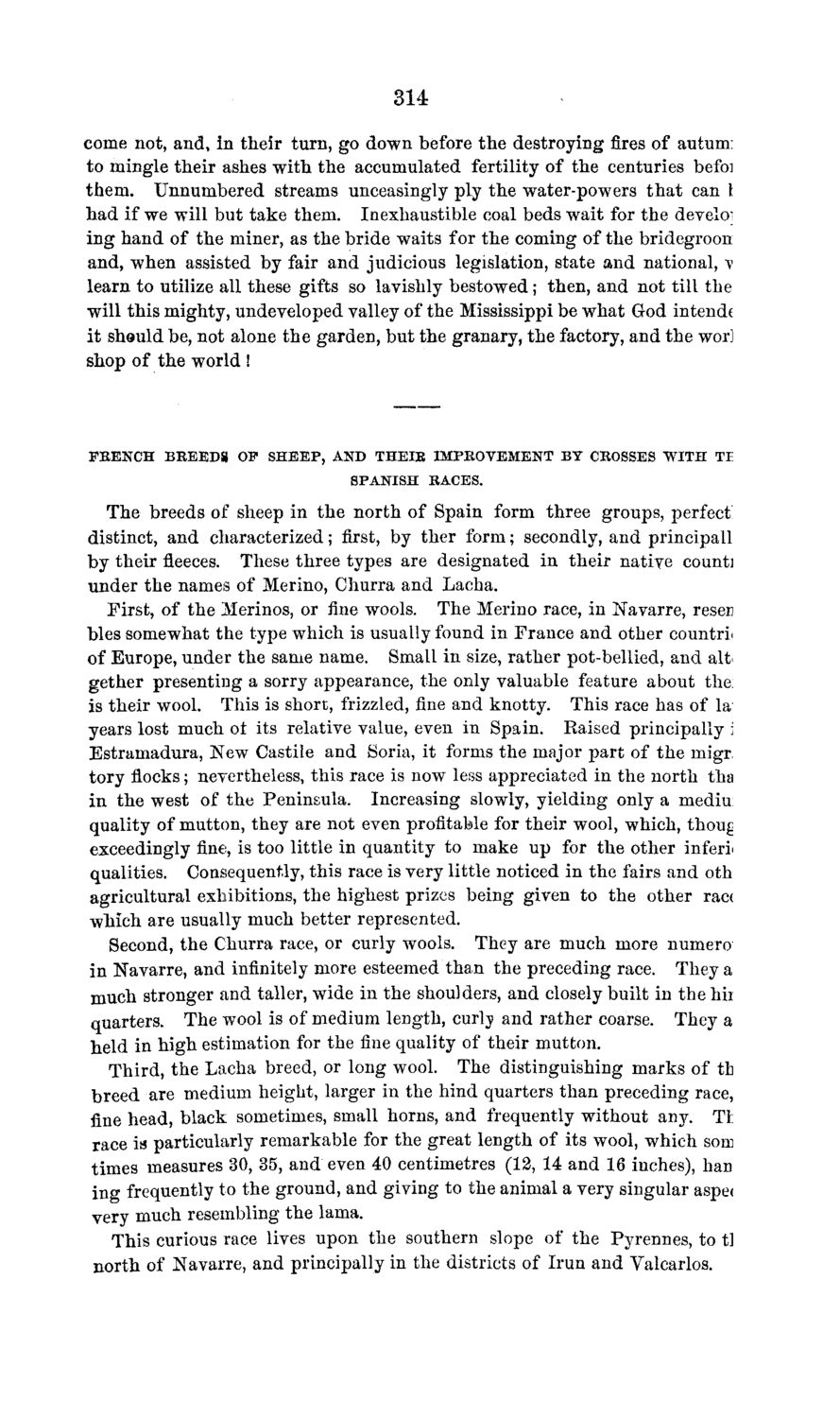| |
| |
Caption: Board of Trustees Minutes - 1869
This is a reduced-resolution page image for fast online browsing.

EXTRACTED TEXT FROM PAGE:
314: come not, and, in their turn, go down before t h e destroying fires of autumi to mingle their ashes with the accumulated fertility of the centuries befoi them. Unnumbered streams unceasingly ply the water-powers t h a t can I h a d if we will but take them. Inexhaustible coal beds wait for the develop ing hand of the miner, as the bride waits for the coming of the bridegroon and, when assisted by fair and judicious legislation, state and national, T learn to utilize all these gifts so lavishly bestowed; then, and not till the will this mighty, undeveloped valley of the Mississippi be what God intende it sheuld be, not alone t h e garden, b u t the granary, the factory, and the wor] shop of the world ! FRENCH BREEDS OP SHEEP, AND THEIR IMPROVEMENT BY CROSSES WITH TI SPANISH RACES. The breeds of sheep in t h e north of Spain form three groups, perfect distinct, and characterized; first, by ther form; secondly, and principall by their fleeces. These three types are designated in their natiye count] under the names of Merino, Churra and Lacha. First, of the Merinos, or fine wools. The Merino race, in Navarre, resell bles somewhat the type which is usually found in France and other countrii of Europe, under the same name. Small in size, rather pot-bellied, and a l t gether presenting a sorry appearance, the only valuable feature about the: is their wool. This is short, frizzled, fine and knotty. This race has of la years lost much ot its relative value, even in Spain. Raised principally i Estramadura, New Castile and Soria, it forms t h e major p a r t of t h e migr; tory flocks; nevertheless, this race is now less appreciated in the north tha in the west of the Peninsula. Increasing slowly, yielding only a mediu quality of mutton, they are not even profitable for their wool, which, thou£ exceedingly fine, is too little in quantity to make up for the other inferi< qualities. Consequently, this race is very little noticed in the fairs and oth agricultural exhibitions, the highest prizes being given to the other rac( which are usually much better represented. Second, the Churra race, or curly wools. They are much more numero in Navarre, and infinitely more esteemed than the preceding race. They a much stronger and taller, wide in the shoulders, and closely built in the hii quarters. The wool is of medium length, curly and rather coarse. They a held in high estimation for the fine quality of their mutton. Third, the Lacha breed, or long wool. The distinguishing marks of th breed are medium height, larger in the hind quarters than preceding race, fine head, black sometimes, small horns, and frequently without any. T l race is particularly remarkable for the great length of its wool, which som times measures 30, 35, and even 40 centimetres (12, 14 and 16 inches), han ing frequently to the ground, and giving to the animal a very singular aspe< very much resembling the lama. This curious race lives upon the southern slope of the Pyrennes, to t] north of Navarre, and principally in the districts of Irun and Valcarlos.
| |